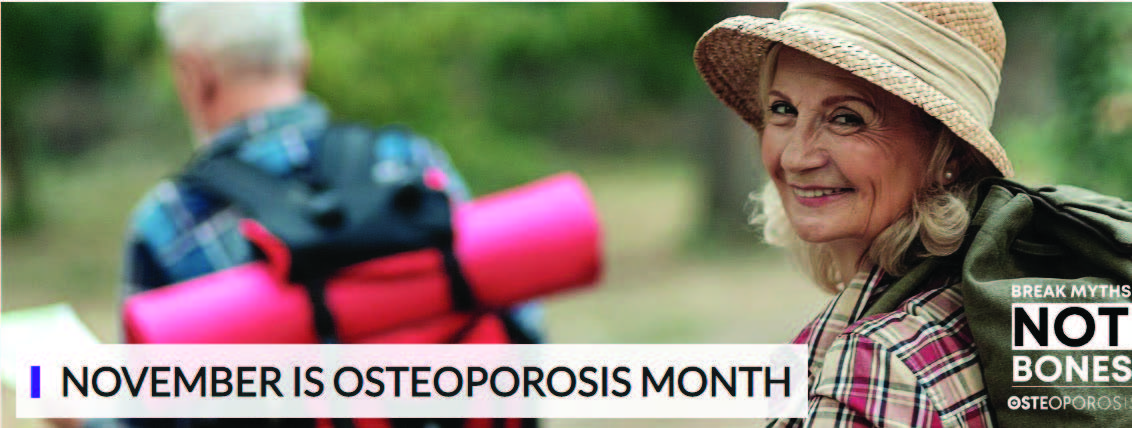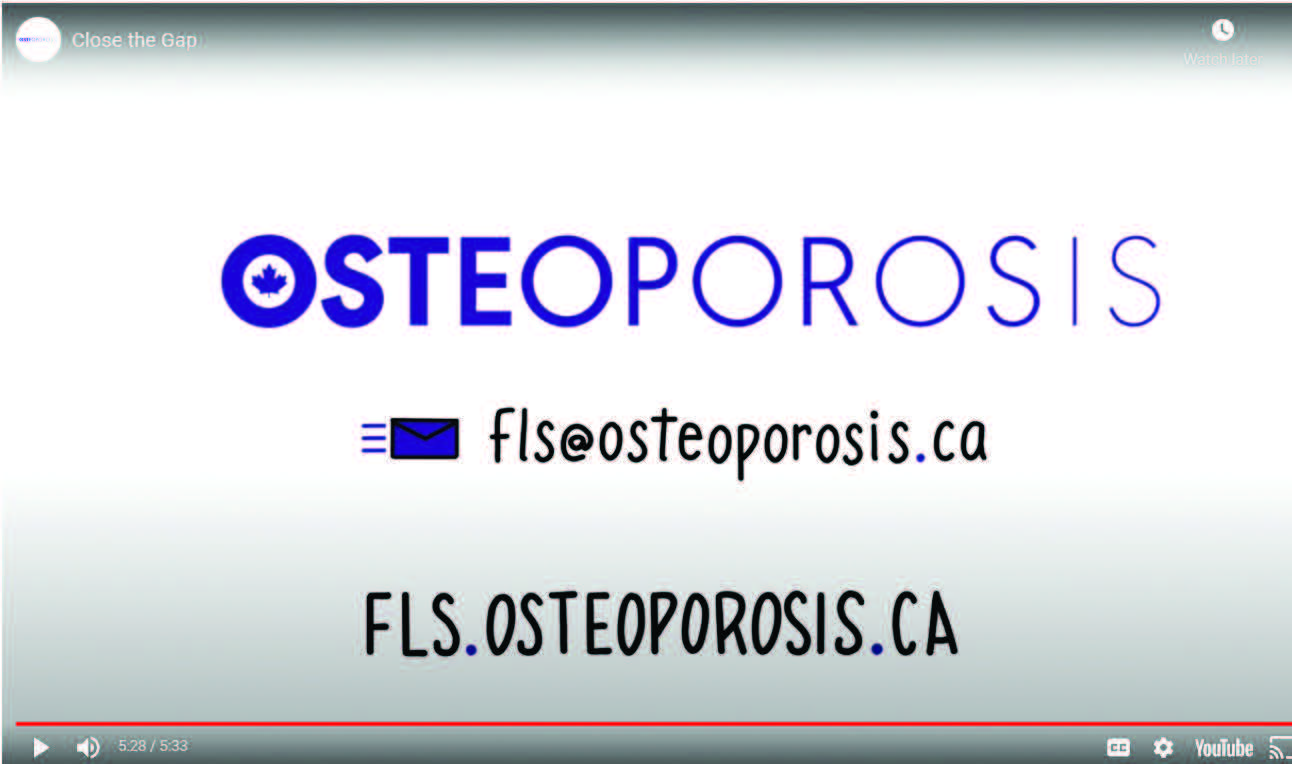Fall 2022 (Volume 32, Number 3)
To Break or Not to Break (Again): Is That the Question?
By Raheem B. Kherani, BSc (Pharm), MD, FRCPC, MHPE; and Sonia Singh, MD, CCFP, MHSc
Download PDF


A 67-year-old woman with rheumatoid arthritis trips over the edge of a carpet and falls on her left side. She sustains a left hip fracture and is treated with a left hemiarthroplasty. She receives post-operative physical therapy and is starting to mobilize independently. What happens next? Is she at risk of another fracture? Is anything done to prevent the next fracture?
Fragility fractures occur spontaneously or following minor trauma such as coughing, sneezing, or falling from standing height. Individuals who sustain such a fracture are at a much higher risk of sustaining more fractures, leading to progressive disability, chronic pain, and decreased quality of life. Effective treatments can reduce future fracture risk by up to 50%, yet fewer than 20% of patients suffering from fragility fractures receive such treatments. This is the post-fracture osteoporosis care gap.
Systematic reviews support the Fracture Liaison Service (FLS) as the most effective model to close the care gap and improve patient care outcomes. A FLS has a dedicated coordinator who proactively identifies fracture patients, determines their future fracture risk, and facilitates appropriate osteoporosis treatments. FLS programs assess patients at the point of orthopedic care and seamlessly integrate secondary fracture prevention into the acute fracture experience. A FLS reduces overall healthcare costs by preventing expensive repeat fractures.
FLS-BC: Spreading FLS throughout British Columbia (BC) (bccop.org/fls) is a working group of the BC Coalition of Osteoporosis Physicians. Our goal is to spread the FLS model across BC. We work in collaboration with Osteoporosis Canada (fls.osteoporosis.ca/) and participate in FLS innovations in BC at a clinical, advocacy, and research level. Peace Arch and Chilliwack Hospitals have established FLS programs with the development of a FLS at Richmond Hospital. Finally, we are partnering with an FLS-Implementation Science Team(msfhr.org/1/award/breaking-cycle-recurrent-fracture-scaling-secondary-fracture-prevention-program-fraser-
health-inform) to study how best to implement a FLS, in order to decrease repeat fractures and improve the quality of life for our patients.
Raheem B. Kherani, BSc (Pharm), MD, FRCPC, MHPE
Co-chair, FLS-BC: Spreading FLS throughout BC
Member, FLS Implementation Science Research Team
Chair, CRA Education Committee
Clinical Associate Professor and
Program Director, Adult Rheumatology, UBC
Vancouver, British Columbia
Sonia Singh, MD, CCFP, MHSc
Co-chair, FLS-BC: Spreading FLS throughout BC
Team Lead for FLS Implementation Science Research Team
Member, FLS Audit and Registry Committees,
Osteoporosis Canada
Clinical Assistant Professor, UBC
Adjunct Professor, SFU
White Rock, British Columbia
|
